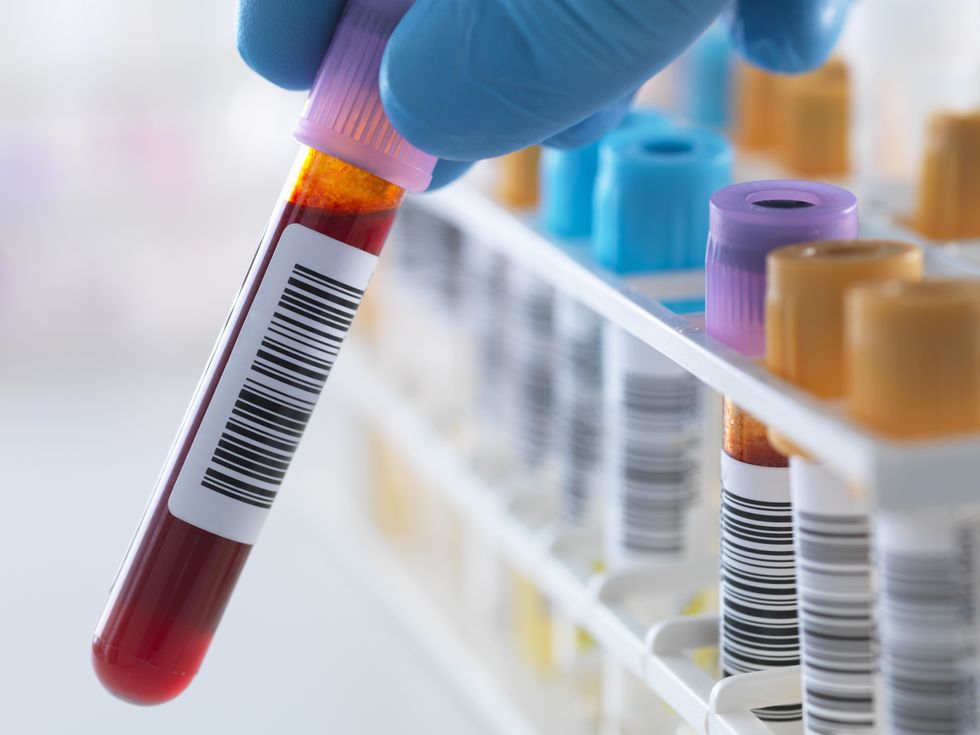Scientists have launched the world’s largest protein study, set to analyse 300,000 blood samples from UK Biobank volunteers in a breakthrough project that could revolutionise disease treatment.
The ambitious research, backed by 14 pharmaceutical companies, aims to understand how proteins influence various diseases, potentially transforming healthcare by the end of this decade.
Professor Sir Rory Collins, chief executive of UK Biobank, emphasised the unprecedented scale of the project, stating “there is nothing on this scale anywhere else in the world”.
The volunteers, who joined the programme in middle age, provided biological samples and ongoing access to their medical records.
A blood sample being held with a row of human samples for analytical testing
GETTY
A pilot project involving 50,000 people has already shown promising results, with researchers discovering “dozens and dozens” of new drug targets.
These targets include proteins that could be suppressed or promoted to tackle illnesses including Parkinson’s, Alzheimer’s and schizophrenia.
Dr Whelan described the pilot as “a treasure trove” of information.
Proteins serve as the body’s molecular machinery, with their role in disease being crucial but complex. Understanding which proteins are associated with specific diseases could help doctors spot conditions earlier and identify potential treatments.
One exciting finding from the pilot study was the identification of different subtypes of depression, which could enable more targeted treatments.
Dr Whelan explained that some people might have depression primarily driven by inflammatory proteins, while others could have a subtype strongly influenced by metabolic proteins.
This breakthrough in understanding depression subtypes demonstrates how protein analysis could lead to more personalised medical approaches.
The discovery highlights the project’s potential to revolutionise how we understand and treat various conditions through detailed protein analysis.
Professor Sir Rory Collins explained that technological advancements have made this large-scale protein analysis possible, similar to how DNA sequencing costs have dropped dramatically.
“We’ve moved from excitement around genetics to excitement around proteins,” he said. “Tech moved on.”
Since UK Biobank began collecting samples 15 years ago, DNA sequencing costs have fallen a hundredfold, enabling genome analysis of all half a million samples.
The same technological progress now allows scientists to track 5,400 proteins in blood samples efficiently and cost-effectively.
While backed by 14 pharmaceutical companies, the research will be accessible to academics, making it a uniquely collaborative effort.
Professor Claudia Langenberg from Queen Mary University of London called the project “game-changing” for studying less common diseases.
“The more we measure, the more diseases we can actually have the fine-grained information to study,” she explained.
Illustration of apolipoprotein-E4 molecules (Apo-E4 blue) in a blood vessel with red blood cells (red)
GETTY
She highlighted potential breakthroughs in various conditions, stating: “For thousands of diseases, we don’t have an existing prediction or prognostic model and all of that will change. Polycystic ovary syndrome, motor neurone disease, specific cancers – kidney, liver, bone. For all of those, we will make significant headway.”
The research could lead to more targeted and efficient healthcare interventions across various conditions.
Scientists suggest it might enable better screening for those whose protein signatures indicate a higher risk of colorectal cancer.
The findings could also help identify individuals who would benefit from earlier statin treatment for heart disease prevention.
Professor Langenberg’s enthusiasm for the project’s potential was evident as she remarked, “I shouldn’t say this as a doctor, but I feel like a kid in a sweetshop.”
The post Major study leads to breakthrough on how to fight and prevent disease appeared first on World Online.

